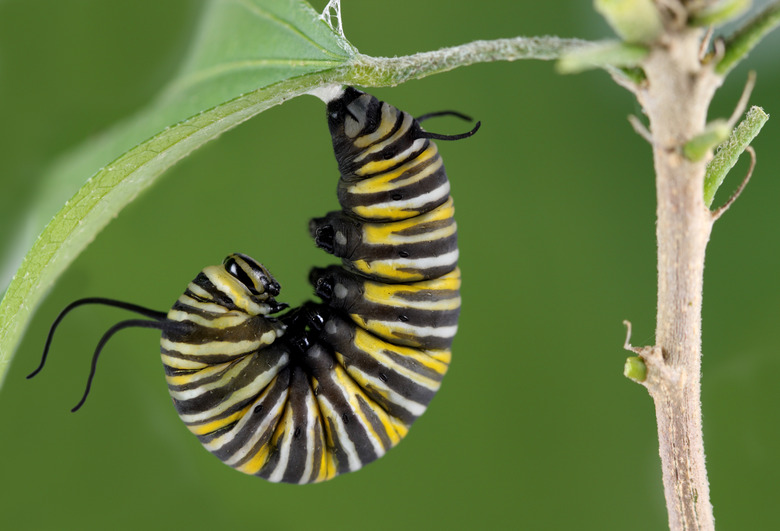How Does A Caterpillar Build A Cocoon?
Background Information
The caterpillar is an immature butterfly or moth, also known as the larval. A caterpillar transforms into a butterfly or moth after hibernating in a cocoon.
The Magic of Complete Metamorphosis
The Magic of Complete Metamorphosis
One of the most truly amazing occurrences of nature is complete metamorphosis. Complete metamorphosis literally means changing from one creature into a completely different creature. It begins with the birth of the larval. The larval then transforms into a pupa. The pupa then builds her cocoon and hibernates within her home. When she emerges from the cocoon, she is a beautiful butterfly or moth. Other insects are known to undergo complete metamorphosis as well.
The Beginning Stages of Life
The Beginning Stages of Life
An adult female butterfly or moth lays eggs, which in turn hatch to reveal the larvae (caterpillars). A caterpillar has only one thing on her mind and that is to eat as often as she can. They feed mostly on leaves, but also munch on certain types of flowers. A caterpillar eats to store energy for when it is time to build her cocoon. She also needs the extra food to sustain life in the cocoon.
Getting Ready to Build a Cocoon
Getting Ready to Build a Cocoon
When a caterpillar is ready to transform into a pupa, it finds an isolated place where it can begin its next phase of life. Some caterpillars hang from secluded tree branches, while others actually bury themselves in the ground. The necessity of a cocoon is to provide a protective covering for the caterpillar, as it transforms into a pupa and ultimately a butterfly or moth. A cocoon quickly becomes prime prey for predators.
Cocoon Construction
Cocoon Construction
Cocoons are constructed from silk. The silk is emitted through two glands and comes out as a thick glue-like material. Barring against popular belief, most caterpillars do not build grand cocoons that are inches in diameter, as often depicted in pictures. Most build a cocoon that is just big enough to encase the body while they are attached to a branch or underside of a leaf. The Skipper butterfly, however, does build the large cocoon that we often envision.
Cocoon Characteristics
Cocoon Characteristics
Cocoons come in a wide variety of colors, as well as the ability to be translucent, opaque, soft or hard. It all depends on the species of butterfly or moth building the cocoon. The butterfly or moth that emerges from the cocoon will get out simply by cutting its way out, or secreting a liquid that softens the cocoon enough to break through the walls.
Cite This Article
MLA
Oliveri, Denise. "How Does A Caterpillar Build A Cocoon?" sciencing.com, https://www.sciencing.com/caterpillar-build-cocoon-4567549/. 13 March 2018.
APA
Oliveri, Denise. (2018, March 13). How Does A Caterpillar Build A Cocoon?. sciencing.com. Retrieved from https://www.sciencing.com/caterpillar-build-cocoon-4567549/
Chicago
Oliveri, Denise. How Does A Caterpillar Build A Cocoon? last modified March 24, 2022. https://www.sciencing.com/caterpillar-build-cocoon-4567549/
